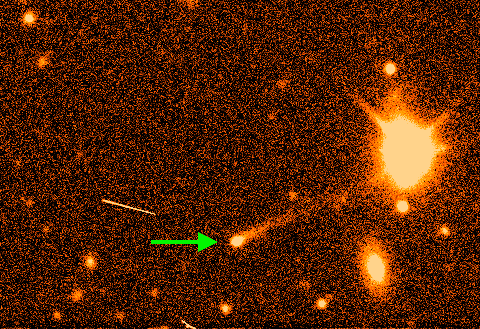In a groundbreaking collaboration between scientists and the global community, the Active Asteroids citizen science project has unveiled a trove of discoveries, shedding light on a poorly understood population of objects in our solar system.
Launched on Aug. 31, 2021, at Northern Arizona University through a NASA Partner program hosted on the Zooniverse online platform, the Active Asteroids initiative calls upon volunteers from throughout the world to assist in the search for active asteroids—asteroids that have comet-like tails that could be caused by water or ice evaporating from the heat of the sun.
Studying these objects is crucial for scientists to understand fundamental questions about the formation and evolution of the solar system, including the origins of water here on Earth. Additionally, active asteroids may be valuable for future space exploration because their icy, comet-like tails could be used for space resources, such as rocket fuel and breathable air.
The ongoing Active Asteroids project uses publicly available data from the Dark Energy Camera (DECam) on the Victor M. Blanco telescope in Chile, and to date, has examined more than 430,000 images of known asteroids by 8,300 citizen scientist volunteers. The results, detailed in a March 14 paper in The Astronomical Journal, showcase the power of community engagement in advancing scientific knowledge.
The recent survey conducted by volunteers has led to some groundbreaking findings. A total of 16 new active objects were identified, marking a significant increase in the total number of active asteroids. The discoveries also extended beyond active asteroids to include a diverse array of solar system objects. This includes the identification of one active Centaur, four active quasi-Hilda asteroids and seven Jupiter-family comets (JFCs). Additionally, the project unearthed unexpected scientific insights, such as the discovery of historical activity on some minor planets.
NAU Department of Astronomy and Planetary Sciences associate professor Chad Trujillo, who is the NASA principal investigator of the project, highlighted the support that the project received from Arizona’s public universities and their ground-based telescopes: the Vatican Advanced Technology Telescope on Mt. Graham, the Baade Magellan Telescope in Chile and the Lowell Discovery Telescope near Happy Jack.
“Citizen scientists perform a great service in identifying potential active asteroids in archival data, but to further study all of the active asteroids discovered in this project, we spent many nights observing them with ground-based telescopes to better understand their behavior,” Trujillo said.
ABOR’s Technology and Research Initiative Fund provided financial support for the project.
Project founder Colin Orion Chandler began the investigation as a graduate student at NAU and is now a LINCC Frameworks project scientist at the University of Washington and DiRAC Institute. He expressed gratitude for the enthusiastic response from citizen scientists:
“The collective effort of our citizen scientist volunteers has expanded our understanding of the solar system,” he said. “The discoveries made by this diverse group of individuals highlight the importance of engaging the public in scientific endeavors.”
Other NAU researchers involved in the project include Will Oldroyd, a postdoctoral researcher who specializes in orbital studies and telescopic observations; Kennedy Farrell, a graduate student focused on collecting telescopic observations; Will Burris, a graduate student who conducts telescopic observations and examines citizen scientist responses; Jarod DeSpain, an undergraduate student who performs observations with Arizona telescopes and interacts with citizen scientists; and Jay Kueny, a graduate student at University of Arizona who received his undergraduate degree from NAU and who conducts telescopic observations of the objects.
The paper includes nine citizen scientists among the co-authors, signifying their critical role in the project’s success. José Campos of Setúbal, Portugal was one of them.
“I like the Active Asteroids project because it is very dynamic and there is always a good chance to contribute with a discovery,” he said. “It not only furthers our knowledge of celestial bodies but also demonstrates the potential citizen scientists can have on advancing cutting-edge research.”



